Rivoluzionario studio di tre ricercatori statunitensi pubblicato su ‘Science’: solo quando il virus diventerà endemico potrà perdere la sua virulenza e trasformarsi man mano in un semplice raffreddore.
Se invece continuiamo testardamente a volerne limitare la diffusione, non ce ne libereremo prima di 10 o 20 anni.
Ribaltate d’un colpo tutte le convinzioni inculcate nei cervelli degli italiani (e certo non solo) da una martellante campagna mediatica al servizio della politica made in Conte e poi Draghi (all’estero firmata dai Biden di turno) e orchestrata dai Profeti di Virus & Vaccini (dai Burioni nostrani ai Fauci a stelle e strisce) al servizio di Big Pharma.
Autori della preziosissima ricerca Jennie Lavine, del Dipartimento di Biologiadella ‘Emory University’ di Atlanta, in Georgia; Rustom Antia, che fa parte dello stesso Dipartimento universitario; e Ottar Bjornstad, del Dipartimento di Biologia e del ‘Centro Dinamica delle Malattie Infettive’ dell’Università della Pennsylvania.
Lo studio, in via prioritaria, si basa sulla comparazione tra i vari coronavirus, studiandone in modo meticoloso tutto il processo evolutivo. Gli esseri umani, infatti, devono convivere con molti altri coronavirus ormai endemici che causano più volte infezioni: ma che poi, al tempo stesso, generano una sufficiente immunità diffusa, e valida per difendere gli adulti da gravi patologie, essendosi indebolita la carica aggressiva.
Attenzione. Non si tratta della classica immunità di gregge, di cui il primo portabandiera è stato il leader britannico Boris Johnson. Perché il concetto è molto più composito ed il ragionamento scientifico che lo supporta ben più articolato e attrezzato. Difficilmente attaccabile.
Lo studio è intitolato, in modo significativo: “Immunological characteristics govern the transition of Covid-19 to endemicity”, vale a dire “Le caratteristiche immunologiche regolano la transizione di Covid-19 all’endemicità”.
Eccoci al passaggio base: “Attualmente ci troviamo di fronte alla questione di come la gravità dell’infezione con la sindrome respiratoria acuta grave coronavirus 2 (Sars-Cov-2) possa cambiare negli anni a venire. La nostra analisi dei dati immunologici ed epidemiologici sui coronavirus umani endemici (HCoV) mostra che l’immunità che blocca le infezioni diminuisce rapidamente, ma che l’immunità che riduce la malattia è di lunga durata”.
“Il nostro modello, che incorpora questi comportamenti dell’immunità, ricapitola sia l’attuale gravità dell’infezione da Sars-CoV-2 sia la natura benigna degli HCoV, suggerendo che una volta raggiunta la fase endemica e l’esposizione primaria è nell’infanzia, Sars-CoV-2 può essere non più virulenta del comune raffreddore”.
Di seguito si proponiamo la lettura – sia in lingua originale che nella versione tradotta – del testo pubblicato da ‘Science’.
Un contributo fondamentale alla ricerca della via d’uscita – quella vera – dalla pandemia, che sta devastando la vita di tutti i cittadini soprattutto per come viene sciaguratamente gestita in Italia, in Europa e anche in molti altri paesi, attraverso politiche tese non a salvare vite umane, ma a soddisfare gli insaziabili appetiti di Big Pharma.
IL TESTO IN ITALIANO
RAPPORTO
Le caratteristiche immunologiche regolano la transizione di COVID-19 all’endemicità
Domare una pandemia
Un anno dopo la sua comparsa, la sindrome respiratoria acuta grave coronavirus 2 (SARS-CoV-2) è diventata così diffusa che ci sono poche speranze di eliminazione. Esistono, tuttavia, molti altri coronavirus umani che sono endemici e causano reinfezioni multiple che generano un’immunità sufficiente per proteggere da gravi malattie degli adulti. Facendo ipotesi sull’immunità acquisita dai suoi parenti già endemici, Lavine et al. ha sviluppato un modello con cui analizzare la traiettoria di SARS-CoV-2 in endemicità. Il modello tiene conto del profilo della malattia strutturato per età di SARS-CoV-2 e valuta l’impatto della vaccinazione. Il passaggio dalle dinamiche epidemiche a quelle endemiche è associato a uno spostamento nella distribuzione per età delle infezioni primarie ai gruppi di età più giovani, che a sua volta dipende dalla velocità di diffusione del virus. L’immunità sterilizzante più duratura rallenterà la transizione verso l’endemicità. A seconda del tipo di risposta immunitaria che genera, un vaccino potrebbe accelerare l’instaurarsi di uno stato di endemicità lieve della malattia.
Abstract
Attualmente ci troviamo di fronte alla questione di come la gravità dell’infezione con la sindrome respiratoria acuta grave coronavirus 2 (SARS-CoV-2) possa cambiare negli anni a venire. La nostra analisi dei dati immunologici ed epidemiologici sui coronavirus umani endemici (HCoV) mostra che l’immunità che blocca le infezioni diminuisce rapidamente ma che l’immunità che riduce la malattia è di lunga durata. Il nostro modello, che incorpora questi componenti dell’immunità, ricapitola sia l’attuale gravità dell’infezione da SARS-CoV-2 sia la natura benigna degli HCoV, suggerendo che una volta raggiunta la fase endemica e l’esposizione primaria è nell’infanzia, SARS-CoV-2 può essere non più virulenta del comune raffreddore. Prevediamo un risultato diverso per un coronavirus emergente che causa una grave malattia nei bambini. Questi risultati rafforzano l’importanza del contenimento comportamentale durante il lancio del vaccino pandemico, spingendoci a valutare gli scenari per continuare la vaccinazione nella fase endemica.
Gli esseri umani sono stati regolarmente minacciati da patogeni emergenti che uccidono una parte sostanziale di tutte le persone nate. Gli ultimi decenni hanno visto molteplici sfide da infezioni virali acute, tra cui sindrome respiratoria acuta grave (SARS), sindrome respiratoria mediorientale (MERS), Hendra, Nipah ed Ebola. Fortunatamente, tutti erano contenuti localmente. Quando il contenimento non ha successo immediato, come è probabile per la nuova sindrome respiratoria acuta grave da betacoronavirus coronavirus 2 (SARS-CoV-2) (1, 2), è necessario comprendere e pianificare la transizione verso l’endemicità e la circolazione continua, con possibile cambiamenti nella gravità della malattia dovuti all’evoluzione del virus e all’accumulo di immunità e resistenza dell’ospite.
SARS-CoV-2 è un virus emergente che causa COVID-19. Il virus ha un numero riproduttivo di base elevato (R0) ed è trasmissibile durante la fase asintomatica dell’infezione, cosa che ne rende difficile il controllo (3). Tuttavia, ci sono altri sei coronavirus con catene di trasmissione umane note, che potrebbero fornire indizi su scenari futuri per l’attuale pandemia. Esistono quattro coronavirus umani (HCoV) che circolano endemicamente in tutto il mondo; questi causano solo sintomi lievi e non rappresentano un notevole onere per la salute pubblica (4). Altri due ceppi di HCoV, SARS-CoV-1 e MERS-CoV, sono emersi negli ultimi decenni e hanno rapporti di mortalità per casi più elevati (CFR) e rapporti di mortalità per infezione (IFR) più elevati rispetto a COVID-19, ma erano contenuti e quindi non si sono mai diffusi ampiamente (5 , 6).
Proponiamo un modello per esplorare i potenziali cambiamenti sia nella trasmissione che nella gravità della malattia degli HCoV emergenti attraverso la transizione verso l’endemicità. Ci concentriamo su SARS-CoV-2 e discutiamo di come le conclusioni sarebbero diverse per i coronavirus emergenti più simili a SARS-CoV-1 e MERS-CoV. La nostra ipotesi è che tutti gli HCoV suscitino un’immunità con caratteristiche simili e l’attuale problema acuto di salute pubblica è una conseguenza dell’emergenza epidemica in una popolazione immunologicamente naïve in cui i gruppi di età più avanzata senza precedente esposizione sono più vulnerabili a malattie gravi. Usiamo le nostre stime dei parametri immunologici ed epidemiologici per gli HCoV endemici per sviluppare un modello quantitativo per la trasmissione endemica di un virus con caratteristiche simili a SARS-CoV-2, inclusa la dipendenza dall’età della gravità. Il nostro modello considera esplicitamente tre misure separate per l’efficacia immunitaria che diminuisce a velocità diverse (fig. S1).
Basandosi sulle idee tratte dalla letteratura sui modelli di vaccini, suggeriamo che l’immunità possa fornire protezione in tre modi (7). Nella sua forma più robusta, l’immunità sterilizzante può impedire a un agente patogeno di replicarsi, rendendo così l’ospite refrattario alla reinfezione. Chiamiamo questa proprietà efficacia immunitaria rispetto alla suscettibilità (IES). Se l’immunità non impedisce la reinfezione, può comunque attenuare la patologia dovuta alla reinfezione (IEP) e / o ridurre la trasmissibilità o l’infettività (IEI). Infatti, studi sperimentali di riesposizione su HCoV endemici forniscono la prova che le tre efficacia immunitarie non diminuiscono alla stessa velocità (8, 9). Lo studio sperimentale di Callow et al. (8) mostra che la reinfezione è possibile entro un anno (IES relativamente breve); tuttavia, dopo la reinfezione, i sintomi sono lievi (IEP alto) e il virus viene eliminato più rapidamente (IEI moderato). Dettagli sulla derivazione del modello possono essere trovati nella sezione 2 dei materiali supplementari (SM).
Rianalizziamo un set di dati dettagliato che stima la sieroprevalenza specifica per età sulla base sia dell’immunoglobulina M (IgM; risposta acuta) che dell’IgG (memoria a lungo termine) contro tutti e quattro gli HCoV circolanti nei bambini e negli adulti (10) per stimare gli intervalli dei parametri per la trasmissione e declino dell’immunità (Fig. 1A). Il rapido aumento della sieroprevalenza sia IgM che IgG indica che l’infezione primaria con tutti e quattro i ceppi endemici di HCoV si verifica all’inizio della vita e la nostra analisi di questi dati ci fornisce una stima dell’età media dell’infezione primaria (MAPI) tra 3,4 e 5,1 anni, con quasi tutti infettati da 15 anni (vedere la sezione 1 SM per i dettagli). L’assenza di titoli IgM rilevabili in qualsiasi individuo di età superiore ai 15 anni suggerisce che la reinfezione degli adulti provoca una risposta di richiamo, indicando che mentre l’immunità specifica per l’HCoV può diminuire, non è persa. Se l’immunità calerebbe a livelli ingenui in assenza di un’elevata circolazione patogena rimane una questione aperta.
Affinché la maggior parte delle persone venga infettata così presto nella vita – più giovane persino del morbillo nell’era pre-vaccino – il tasso di attacco de
ve superare la trasmissione dalle sole infezioni primarie. Il modello mostra che un alto tasso di attacco può derivare da una combinazione di elevata trasmissibilità da infezioni primarie (cioè, R0 elevato), declino dell’immunità sterilizzante e trasmissione sostanziale da reinfezioni negli individui più anziani. Il rapido declino dell’immunità sterilizzante è riportato anche nelle infezioni sperimentali da HCoV degli esseri umani, che hanno dimostrato che la reinfezione è possibile 1 anno dopo un’infezione precedente, anche se con sintomi più lievi (IEP) e una durata più breve (IEI) (8). La Figura 1B mostra le combinazioni plausibili di immunità in declino e trasmissione da individui reinfettati che sono necessarie per produrre la MAPI osservata nella Figura 1A, sulla base dei livelli di infezione allo stato stazionario (vedere la sezione 2.1 di SM per i dettagli). La tabella 1 mostra gli intervalli dei parametri utilizzati nelle nostre simulazioni.
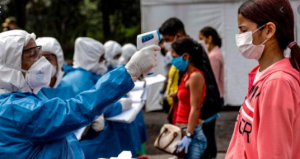
All’inizio di un’epidemia, la distribuzione per età dei casi rispecchia quella della popolazione (Fig. 2A). Tuttavia, una volta che i dati demografici dell’infezione raggiungono uno stato stazionario, il nostro modello prevede che i casi primari si verificano quasi interamente nei neonati e nei bambini piccoli, che, nel caso di COVID-19, sperimentano un CFR basso e un IFR contemporaneamente basso. Si prevede che le reinfezioni negli individui più anziani siano comuni durante la fase endemica e contribuiscano alla trasmissione, ma in questa popolazione allo stato stazionario, gli individui più anziani, che sarebbero a rischio di malattia grave da un’infezione primaria, hanno acquisito l’immunità che riduce la malattia dopo infezione durante l’infanzia. Il pannello superiore della Fig. 3B illustra come l’IFR complessivo per SARS-CoV-2 diminuisce drasticamente, scendendo infine al di sotto di quello dell’influenza stagionale (~ 0,001) una volta raggiunto lo stato stazionario endemico.
l tempo necessario per completare il cambiamento in IFR man mano che si sviluppa l’endemicità dipende sia dalla trasmissione (R0) che dalla perdita di immunità [declino dell’immunità sterilizzante (ω) e trasmissibilità delle reinfezioni (ρ)], come mostrato in Fig. 2B e fig. S4. Il passaggio dalle dinamiche epidemiche a quelle endemiche è associato a uno spostamento nella distribuzione per età delle infezioni primarie a gruppi di età inferiore (Fig. 2A). Questa transizione può richiedere da pochi anni a pochi decenni, a seconda della velocità con cui si diffonde l’agente patogeno. Il tasso di diffusione, misurato da R0, è determinato da una combinazione di proprietà virali e dalla frequenza dei contatti sociali e può quindi essere ridotto dall’allontanamento sociale. Il pannello superiore in Fig. 2A mostra l’effetto di ridurre R0 a 2, mentre i pannelli centrale e inferiore mostrano le dinamiche per R0 più alto, che sono più simili a quelle di SARS-CoV-2 in assenza di misure di controllo. Se la trasmissione è alta, il modello prevede un elevato carico di casi e un alto tasso di mortalità negli anni precedenti dopo l’emergenza (Fig. 2 e Fig. S5). Vediamo che, come ci si potrebbe aspettare, un’immunità sterilizzante più duratura rallenta la transizione verso l’endemicità (Fig. 2B). Questi risultati sono robusti per una distribuzione più biologicamente realistica per la durata dell’immunità sterilizzante e per la possibilità che la generazione dell’immunità protettiva richieda più di un’infezione (vedere SM sezione 3 e figure da S5 a S9).
Rallentare l’epidemia attraverso misure di allontanamento sociale che riducono R0 vicino a 1 appiattisce la curva, ritardando così le infezioni e prevenendo la maggior parte dei decessi precocemente, offrendo un momento critico per lo sviluppo di un vaccino efficace (fig. S10). Se l’immunità IES e IEP indotta dal vaccino è simile a quella indotta dalle infezioni da HCoV, il vaccino può inaugurare il regime endemico più rapidamente. Il codice modello (vedere i riconoscimenti) fornisce un’impalcatura flessibile per lo studio di scenari di vaccinazione alternativi. In particolare, il modello prevede che una volta raggiunto lo stato endemico, la vaccinazione di massa potrebbe non essere più necessaria per salvare vite umane (vedere SM sezione 4 e figura S11).
 Possiamo estendere le nostre previsioni ad altre due infezioni potenzialmente emergenti da coronavirus, SARS e MERS. Il nostro modello prevede che nello stato endemico, l’IFR di un HCoV circolante dipende principalmente dalla gravità delle infezioni infantili. Nel caso di SARS-CoV-1, che è più patogeno di SARS-CoV-2, ci aspettiamo ancora un basso carico di malattia nella fase endemica, perché SARS-CoV-1, come SARS-CoV-2, ha un basso IFR nei giovani (Fig.3). Tuttavia, i dati suggeriscono che non tutti gli HCoV emergenti seguono questo modello ottimistico; l’IFR complessivo di un virus endemico simile alla MERS non diminuirebbe durante la transizione verso l’endemicità, come si vede nella Fig. 3B, e questo perché la gravità della malattia (e IFR) è alta nei bambini, la fascia di età che dovrebbe casi primari durante la fase endemica. Nella fase endemica, sarebbe quindi necessario un programma di vaccinazione contro la MERS per evitare un eccesso di mortalità (fig. S11).
Possiamo estendere le nostre previsioni ad altre due infezioni potenzialmente emergenti da coronavirus, SARS e MERS. Il nostro modello prevede che nello stato endemico, l’IFR di un HCoV circolante dipende principalmente dalla gravità delle infezioni infantili. Nel caso di SARS-CoV-1, che è più patogeno di SARS-CoV-2, ci aspettiamo ancora un basso carico di malattia nella fase endemica, perché SARS-CoV-1, come SARS-CoV-2, ha un basso IFR nei giovani (Fig.3). Tuttavia, i dati suggeriscono che non tutti gli HCoV emergenti seguono questo modello ottimistico; l’IFR complessivo di un virus endemico simile alla MERS non diminuirebbe durante la transizione verso l’endemicità, come si vede nella Fig. 3B, e questo perché la gravità della malattia (e IFR) è alta nei bambini, la fascia di età che dovrebbe casi primari durante la fase endemica. Nella fase endemica, sarebbe quindi necessario un programma di vaccinazione contro la MERS per evitare un eccesso di mortalità (fig. S11).
Il risultato chiave del nostro modello di struttura che riconosce esplicitamente che l’immunità funzionale alla reinfezione, alla malattia e alla diffusione è diversa è che, a differenza delle infezioni che sono gravi durante l’infanzia, SARS-CoV-2 potrebbe unirsi ai ranghi di lieve, che causa il freddo HCoV endemici a lungo termine. Una previsione critica è che la gravità degli HCoV emergenti una volta raggiunta l’endemicità dipende solo dalla gravità dell’infezione nei bambini (Fig.3), perché tutte le prove disponibili suggeriscono che l’immunità agli HCoV ha IES breve e IEI moderato, portando a frequenti reinfezioni in tutto il età adulta (11, 12), ma una IEP forte tale che l’infezione infantile fornisce protezione dalla patologia in caso di reinfezione in età adulta, come evidenziato dalla rarità di infezioni gravi o titoli di IgM rilevabili negli adulti. Fattori di virulenza specifici del ceppo, come il recettore cellulare condiviso, l’enzima di conversione dell’angiotensina 2 (ACE-2), a cui si legano SARS-CoV-1, SARS-CoV-2 e il ceppo endemico NL63 (13-16) , può influenzare il CFR durante la fase di emergenza ma avere un impatto minimo sulla gravità della malattia nella fase endemica. Poiché i quattro HCoV endemici circolano a livello globale da molto tempo e quasi tutti sono infetti in giovane età, non possiamo accertare quanta patologia deriverebbe da un caso primario o addirittura secondario di uno di questi in una persona anziana o altrimenti vulnerabile .
Le informazioni chiave derivano dal modo in cui il nostro modello incorpora esplicitamente diversi componenti di protezione immunologica rispetto a suscettibilità, patologia e infettività (IES, IEP e IEI, rispettivamente) e le loro diverse velocità di diminuzione. Nella nostra analisi, abbiamo ipotizzato che questi componenti dell’immunità per SARS-CoV-2 siano paragonabili a quelli degli HCoV endemici e questo deve essere determinato. Inoltre, durante la transizione verso l’endemicità, dobbiamo considerare come l’efficacia immunitaria dipenda dalle infezioni primarie e secondarie attraverso le età (17) e come le risposte differiscano
Se per mantenere la protezione dalla patologia è necessario un frequente potenziamento dell’immunità mediante la circolazione del virus in corso, potrebbe essere meglio che il vaccino imiti l’immunità naturale nella misura in cui previene la patologia senza bloccare la circolazione del virus in corso. I risultati preliminari suggeriscono che il vaccino a base di adenovirus è migliore nel prevenire infezioni gravi rispetto a quelle lievi o asintomatiche (23) e sarà importante raccogliere dati simili per gli altri vaccini. Se il vaccino dovesse causare una riduzione significativa della trasmissione, potrebbe essere importante considerare strategie che mirino alla consegna a individui più anziani per i quali l’infezione può causare una maggiore morbilità e mortalità, consentendo al contempo il mantenimento dell’immunità naturale e della trasmissione negli individui più giovani. Durante la transizione verso l’endemicità, le infezioni primarie da SARS-CoV-2 si verificheranno frequentemente negli individui più anziani e dobbiamo determinare se l’immunità indotta dall’infezione o dalla vaccinazione nell’età adulta è simile a quella prodotta dalle infezioni naturali nell’infanzia. Finora, sono state segnalate poche reinfezioni con SARS-CoV-2 e la gravità della malattia è variata (24); l’unico studio sulla reinfezione a livello di popolazione di cui siamo a conoscenza stima un basso tasso di reinfezione nei primi 6 mesi dopo l’infezione primaria e una malattia lieve dopo la reinfezione (25), ma ulteriori analisi e monitoraggio sono vitali.
I risultati presentati qui suggeriscono che l’uso dei sintomi come strumento di sorveglianza per frenare la diffusione di SARS-CoV-2 diventerà più difficile, poiché le reinfezioni più lievi contribuiscono sempre più alle catene di trasmissione e ai tassi di attacco a livello di popolazione. Inoltre, l’infezione o la vaccinazione possono proteggere dalle malattie ma non fornire il tipo di immunità di blocco della trasmissione che consente la schermatura (26) o la generazione di immunità di mandria a lungo termine (2).
I dettagli della variazione dell’IFR complessivo durante il periodo transitorio saranno influenzati da un’ampia gamma di fattori, come i tassi di contatto umano specifici per età (27) e la suscettibilità alle infezioni (28), nonché il miglioramento dei protocolli di trattamento, la capacità ospedaliera e l’evoluzione del virus. Il risultato qualitativo della malattia lieve nella fase endemica è robusto a queste complessità, ma le previsioni quantitative per la fase transitoria dipenderanno da un’attenta considerazione di queste realtà e dal modo in cui interagiscono con le dinamiche dell’infezione e le componenti dell’immunità (29).
I cambiamenti nell’IFR nel tempo previsti dal modello hanno implicazioni per la strategia di vaccinazione contro gli HCoV emergenti attuali e futuri. Il distanziamento sociale e un vaccino efficace sono fondamentali per il controllo durante un’epidemia vergine e la transizione da essa, ma una volta entrati nella fase endemica, la vaccinazione di massa potrebbe non essere più necessaria. La necessità di una vaccinazione continua dipenderà dalla dipendenza dall’età dell’IFR. Se le infezioni primarie dei bambini sono lievi (come per SARS-CoV-1 e SARS-CoV-2), la vaccinazione continua potrebbe non essere necessaria poiché i casi primari regrediscono a lievi tiri di naso infantili. Se, d’altra parte, l’infezione primaria nei bambini è grave (come per la MERS), la vaccinazione dei bambini dovrà essere continuata.
Da una prospettiva ecologica ed evolutiva, il nostro studio apre la porta a domande riguardanti le dinamiche all’interno e tra l’ospite dell’immunità umana e delle popolazioni patogene di fronte all’efficacia immunitaria con cinetiche diverse. Apre anche la questione di come queste efficacia immunitarie interagiscano con l’immunità crociata del ceppo, che è probabilmente rilevante all’interno degli alfa e dei betacoronavirus. La considerazione dei dati e delle previsioni del modello dall’emergenza attraverso l’endemicità degli HCoV ha rivelato un quadro per la comprensione dell’immunità e della vaccinazione che possono applicarsi a una varietà di infezioni, come il virus respiratorio sinciziale e l’influenza stagionale, che condividono distribuzioni di età e risposte immunitarie simili.
IL TESTO ORIGINALE
Taming a pandemic
One year after its emergence, severe acute respiratory syndrome coronavirus 2 (SARS-CoV-2) has become so widespread that there is little hope of elimination. There are, however, several other human coronaviruses that are endemic and cause multiple reinfections that engender sufficient immunity to protect against severe adult disease. By making assumptions about acquired immunity from its already endemic relatives, Lavine et al. developed a model with which to analyze the trajectory of SARS-CoV-2 into endemicity. The model accounts for SARS-CoV-2’s age-structured disease profile and assesses the impact of vaccination. The transition from epidemic to endemic dynamics is associated with a shift in the age distribution of primary infections to younger age groups, which in turn depends on how fast the virus spreads. Longer-lasting sterilizing immunity will slow the transition to endemicity. Depending on the type of immune response it engenders, a vaccine could accelerate establishment of a state of mild disease endemicity.
Science, this issue p. 741
Abstract
We are currently faced with the question of how the severity of infection with severe acute respiratory syndrome coronavirus 2 (SARS-CoV-2) may change in the years ahead. Our analysis of immunological and epidemiological data on endemic human coronaviruses (HCoVs) shows that infection-blocking immunity wanes rapidly but that disease-reducing immunity is long-lived. Our model, incorporating these components of immunity, recapitulates both the current severity of SARS-CoV-2 infection and the benign nature of HCoVs, suggesting that once the endemic phase is reached and primary exposure is in childhood, SARS-CoV-2 may be no more virulent than the common cold. We predict a different outcome for an emergent coronavirus that causes severe disease in children. These results reinforce the importance of behavioral containment during pandemic vaccine rollout, while prompting us to evaluate scenarios for continuing vaccination in the endemic phase.
Humans have regularly been threatened by emerging pathogens that kill a substantial fraction of all people born. Recent decades have seen multiple challenges from acute virus infections, including severe acute respiratory syndrome (SARS), Middle East respiratory syndrome (MERS), Hendra, Nipah, and Ebola. Fortunately, all were locally contained. When containment is not immediately successful, as is likely for the novel betacoronavirus severe acute respiratory syndrome coronavirus 2 (SARS-CoV-2) (1, 2), we need to understand and plan for the transition to endemicity and continued circulation, with possible changes in disease severity owing to virus evolution and buildup of host immunity and resistance.
SARS-CoV-2 is an emerging virus that causes COVID-19. The virus has a high basic reproductive number (R0) and is transmissible during the asymptomatic phase of infection, both of which make it hard to control (3). However, there are six other coronaviruses with known human chains of transmission, which may provide clues to future scenarios for the current pandemic. There are four human coronaviruses (HCoVs) that circulate endemically around the globe; these cause only mild symptoms and are not a considerable public health burden (4). Two other HCoV strains, SARS-CoV-1 and MERS-CoV, emerged in recent decades and have higher case fatality ratios (CFRs) and higher infection fatality ratios (IFRs) than COVID-19 but were contained and thus never spread widely (5, 6).
We propose a model to explore the potential changes in both transmission and disease severity of emerging HCoVs through the transition to endemicity. We focus on SARS-CoV-2 and discuss how the conclusions would differ for emerging coronaviruses more akin to SARS-CoV-1 and MERS-CoV. Our hypothesis is that all HCoVs elicit immunity with similar characteristics, and the current acute public health problem is a consequence of epidemic emergence into an immunologically naïve population in which older age groups with no previous exposure are most vulnerable to severe disease. We use our estimates of immunological and epidemiological parameters for endemic HCoVs to develop a quantitative model for endemic transmission of a virus with SARS-CoV-2–like characteristics, including the age dependence of severity. Our model explicitly considers three separate measures for immune efficacy that wane at different rates (fig. S1).
Building on ideas from the vaccine modeling literature, we suggest that immunity may provide protection in three ways (7). In its most robust form, sterilizing immunity can prevent a pathogen from replicating, thereby rendering the host refractory to reinfection. We term this property immune efficacy with respect to susceptibility (IES). If immunity does not prevent reinfection, it may still attenuate pathology due to reinfection (IEP) and/or reduce transmissibility or infectiousness (IEI). Indeed, experimental reexposure studies on endemic HCoVs provide evidence that the three immune efficacies do not wane at the same rate (8, 9). Callow et al.’s experimental study (8) shows that reinfection is possible within one year (relatively short IES); however, upon reinfection, symptoms are mild (high IEP) and the virus is cleared more quickly (moderate IEI). Details on the derivation of the model can be found in section 2 of the supplementary materials (SM).
We reanalyze a detailed dataset that estimates age-specific seroprevalence on the basis of both immunoglobulin M (IgM; acute response) and IgG (long-term memory) against all four circulating HCoVs in children and adults (10) to estimate parameter ranges for transmission and waning of immunity (Fig. 1A). The rapid rise in both IgM and IgG seroprevalence indicates that primary infection with all four endemic HCoV strains happens early in life, and our analysis of these data gives us an estimate for the mean age of primary infection (MAPI) between 3.4 and 5.1 years, with almost everyone infected by age 15 (see SM section 1 for details). The absence of detectable IgM titers in any individual over the age of 15 years suggests that reinfection of adults causes a recall response, indicating that while HCoV-specific immunity may wane, it is not lost. Whether immunity would wane to naïve levels in the absence of high pathogen circulation remains an open question.
(A) Mean proportion seropositive for IgG (green, top lines) and IgM (purple, bottom lines) against the four endemic HCoV strains [dots connected by dashed lines; vertical lines represent the 95% confidence interval (CI); data from (10)]. The mean age of primary infection (MAPI) based on IgM data with 95% CI is shown in the inset of each panel (see SM for details). (B) MAPI as a function of waning of sterilizing immunity ω (y axis) and transmissibility of reinfections ρ (x axis). The MAPI was calculated from the equilibrium dynamics of the model shown in fig. S1 and supplementary equations 3 to 9 with a plausible basic reproductive number (R0 = 5), 0 < ω < 2, and 0 < ρ < 1. See SM section 2.1 for details. The inset shows the plausible combinations of values of ρ and ω consistent with the MAPI for HCoVs estimated in (A). F.O.I., force of infection; I2, reinfection. [See fig. S1 for parallel figures calculated at extreme plausible values for R0 (i.e., R0 = 2 and 10).]
For most people to be infected so early in life—younger even than measles in the pre-vaccine era—the attack rate must exceed transmission from primary infections alone. The model shows that a high attack rate can arise from a combination of high transmissibility from primary infections (i.e., high R0), waning of sterilizing immunity, and substantial transmission from reinfections in older individuals. The rapid waning of sterilizing immunity is also reported in experimental HCoV infections of humans, which showed that reinfection is possible 1 year after an earlier infection, albeit with milder symptoms (IEP) and a shorter duration (IEI) (8). Figure 1B shows the plausible combinations of waning immunity and transmission from reinfected individuals that are required to produce the MAPI observed in Fig. 1A, based on steady-state infection levels (see SM section 2.1 for details). Table 1 shows the ranges of the parameters used in our simulations.
Characteristics of coronavirus-immunity interactions and relevant parameter ranges.
At the beginning of an outbreak, the age distribution of cases mirrors that of the population (Fig. 2A). However, once the demographics of infection reaches a steady state, our model predicts that primary cases occur almost entirely in babies and young children, who, in the case of COVID-19, experience a low CFR and a concomitantly low IFR. Reinfections in older individuals are predicted to be common during the endemic phase and to contribute to transmission, but in this steady-state population, older individuals, who would be at risk for severe disease from a primary infection, have acquired disease-reducing immunity after infection during childhood. The top panel of Fig. 3Billustrates how the overall IFR for SARS-CoV-2 drops drastically, eventually falling below that of seasonal influenza (~0.001) once the endemic steady-state is reached.
Transition from epidemic to endemic dynamics for emerging HCoVs, simulated from an extension of the model presented in fig. S1 that includes age structure. Demographic characteristics (age distribution, birth, and age-specific death rates) are taken from the United States, and seasonality is incorporated via a sinusoidal forcing function (see SM section 2.2). Weak social distancing is approximated by R0 = 2. (See figs. S9 to S11 for strong social distancing results, R0 < 1.5.) (A) Daily number of new infections (black line; calculations in SM section 2.3). An initial peak is followed by a low-incidence endemic state (years 5 to 10 shown in the inset). A higher R0 results in a larger and faster initial epidemic and a more rapid transition to endemic dynamics. The proportion of primary cases in different age groups changes over time (plotted in different colors), and the transition from epidemic to endemic dynamics results in primary cases being restricted to younger age groups. Parameters for simulations: ω = 1 and ρ = 0.7. (B) Time for the average IFR (6-month moving average) to fall to 0.001, which is the IFR associated with seasonal influenza. Gray areas represent simulations where the IFR did not reach 0.001 within 30 years. The time to IFR = 0.001 decreases as the transmissibility (R0) increases and the duration of sterilizing immunity becomes shorter. Results are shown for ρ = 0.7. See SM section 2.3 and figs. S4 to S7 for sensitivity analyses and model specifications.
The age dependence of the IFR determines how the overall IFR changes during the transition from epidemic to endemic dynamics for emerging HCoVs. (A) Age dependence of the IFRs for the three emerging HCoVs. Primary infections with MERS-CoV and SARS-CoV-1 are consistently symptomatic, and the IFR and CFR are therefore assumed to be the same. SARS-CoV-1 and SARS-CoV-2 have J-shaped profiles, with a monotonic increase in IFR with age. The age-specific IFR for MERS-CoV is U-shaped, with high mortality in both the young and old age groups. Details of the statistical smoothing are described in SM section 6. (B) The overall IFR changes during the transition to endemic dynamics. These calculations assume that deaths due to reinfections are negligible. We relax this assumption to allow for a slower buildup of immunity and possible death due to secondary infection in figs. S5 to S9 and show that the qualitative results do not change.
The time it takes to complete the shift in IFR as endemicity develops depends on both transmission (R0) and loss of immunity [waning of sterilizing immunity (ω) and transmissibility of reinfections (ρ)], as shown in Fig. 2B and fig. S4. The transition from epidemic to endemic dynamics is associated with a shift in the age distribution of primary infections to lower age groups (Fig. 2A). This transition may take anywhere from a few years to a few decades, depending on how quickly the pathogen spreads. The rate of spread, measured by R0, is determined by a combination of viral properties and the frequency of social contacts and may therefore be reduced by social distancing. The top panel in Fig. 2A shows the effect of reducing R0 to 2, whereas the middle and bottom panels show the dynamics for higher R0, which are more akin to those of SARS-CoV-2 in the absence of control measures. If transmission is high, the model predicts a high case load and high death rate in earlier years following emergence (Fig. 2 and fig. S5). We see that, as might be expected, longer-lasting sterilizing immunity slows down the transition to endemicity (Fig. 2B). These results are robust to a more biologically realistic distribution for the duration of sterilizing immunity and the possibility that the generation of protective immunity requires more than one infection (see SM section 3 and figs. S5 to S9).
Slowing down the epidemic through social distancing measures that reduce R0 to close to 1 flattens the curve, thus delaying infections and preventing most deaths from happening early on, affording critical time for the development of an effective vaccine (fig. S10). If vaccine-induced IESand IEP immunity is similar to that induced by HCoV infections, the vaccine may usher in the endemic regime more quickly. The model code (see the acknowledgments) provides a flexible scaffolding for studying alternative vaccination scenarios. Notably, the model predicts that once the endemic state is reached, mass vaccination may no longer be necessary to save lives (see SM section 4 and fig. S11).
We can extend our predictions to two other potentially emerging coronavirus infections, SARS and MERS. Our model predicts that in the endemic state, the IFR of a circulating HCoV depends primarily on the severity of childhood infections. In the case of SARS-CoV-1, which is more pathogenic than SARS-CoV-2, we still expect a low disease burden in the endemic phase, because SARS-CoV-1, like SARS-CoV-2, has a low IFR in young people (Fig. 3). However, data suggest that not all emerging HCoVs follow this optimistic pattern; the overall IFR of an endemic MERS-like virus would not decrease during the transition to endemicity, as seen in Fig. 3B, and this is because disease severity (and IFR) is high in children, the age group expected to experience the bulk of primary cases during the endemic phase. In the endemic phase, a vaccination program against MERS would therefore be necessary to avoid excess mortality (fig. S11).
The key result from our model framework that explicitly recognizes that functional immunity to reinfection, disease, and shedding are different is that, in contrast with infections that are severe in childhood, SARS-CoV-2 could join the ranks of mild, cold-causing endemic HCoVs in the long run. A critical prediction is that the severity of emergent HCoVs once they reach endemicity depends only on the severity of infection in children (Fig. 3), because all available evidence suggests that immunity to HCoVs has short IES and moderate IEI, leading to frequent reinfection throughout adulthood (11, 12), but strong IEP such that childhood infection provides protection from pathology upon reinfection in adulthood, as evidenced by the rarity of severe infections or detectable IgM titers in adults. Strain-specific virulence factors, such as the shared cellular receptor, angiotensin-converting enzyme 2 (ACE-2), to which SARS-CoV-1, SARS-CoV-2, and the endemic strain NL63 all bind (13–16), may affect the CFR during the emergence phase but have little impact on the severity of disease in the endemic phase. Because the four endemic HCoVs have been globally circulating for a long time and almost everyone is infected at a young age, we cannot ascertain how much pathology would result from a primary or even a secondary case of any of these in an elderly or otherwise vulnerable person.
The key insights come from how our model explicitly incorporates different components of immunological protection with respect to susceptibility, pathology, and infectivity (IES, IEP, and IEI, respectively) and their different rates of waning. In our analysis, we hypothesized that these components of immunity for SARS-CoV-2 are comparable to those of endemic HCoVs, and this needs to be determined. Additionally, during the transition to endemicity, we need to consider how the immune efficacies depend on primary and secondary infections across ages (17) and how responses differ between vaccination and natural infection.
Longitudinal analysis of SARS patients provides an opportunity to measure the durability of immune memory in the absence of reexposure. The only long-term study we know of that follows SARS-CoV-1–specific antibodies suggests that they wane faster than antibodies to other live viruses and vaccines such as measles, mumps, rubella, and smallpox (18) and fall below the threshold of detection in 6 years (19). In contrast to antibody responses, memory T cells persist for much longer periods (19, 20) and confer protection in animal model systems (21).
We further consider the effects of strain variation both for natural infection and vaccination. Strain variation and antibody escape may occur in endemic strains (22); however, the fact that symptoms are mild suggests that immunity induced by previously seen strains is nonetheless strong enough to prevent severe disease. Indeed, among HCoVs, frequent reinfections appear to boost immunity against related strains (12). However, the effect of strain variation may differ for vaccine-induced immunity, especially in light of the narrower epitope repertoire of many currently authorized vaccines.
If frequent boosting of immunity by ongoing virus circulation is required to maintain protection from pathology, then it may be best for the vaccine to mimic natural immunity insofar as preventing pathology without blocking ongoing virus circulation. Preliminary results suggest the adenovirus-based vaccine is better at preventing severe than mild or asymptomatic infections (23), and it will be important to collect similar data for the other vaccines. Should the vaccine cause a major reduction in transmission, it might be important to consider strategies that target delivery to older individuals for whom infection can cause higher morbidity and mortality, while allowing natural immunity and transmission to be maintained in younger individuals. During the transition to endemicity, primary SARS-CoV-2 infections will frequently occur in older individuals, and we need to determine whether immunity induced by infection or vaccination in adulthood is similar to that produced by natural infections in childhood. Thus far, there have been few reinfections reported with SARS-CoV-2, and disease severity has varied (24); the only population-level study of reinfection that we are aware of estimates a low rate of reinfection in the first 6 months after primary infection and mild disease upon reinfection (25), but further analysis and monitoring are vital.
The findings presented here suggest that using symptoms as a surveillance tool to curb the spread of SARS-CoV-2 will become more difficult, as milder reinfections increasingly contribute to chains of transmission and population-level attack rates. In addition, infection or vaccination may protect against disease but not provide the type of transmission-blocking immunity that allows for shielding (26) or the generation of long-term herd immunity (2).
The details of the change in overall IFR through the transient period will be affected by a wide array of factors, such as age-specific human contact rates (27) and susceptibility to infection (28) as well as improvement in treatment protocols, hospital capacity, and virus evolution. The qualitative result of mild disease in the endemic phase is robust to these complexities, but quantitative predictions for the transient phase will depend on a careful consideration of these realities and how they interact with the dynamics of infection and components of immunity (29).
The changes in the IFR over time predicted by the model have implications for vaccination strategy against current and future emerging HCoVs. Social distancing and an effective vaccine are critical for control during a virgin epidemic and the transition out of it, but once we enter the endemic phase, mass vaccination may no longer be necessary. The necessity for continual vaccination will depend on the age-dependence of the IFR. If primary infections of children are mild (as for SARS-CoV-1 and SARS-CoV-2), continued vaccination may not be needed as primary cases recede to mild childhood sniffles. If, on the other hand, primary infection in children is severe (as for MERS), then vaccination of children will need to be continued.
From an ecological and evolutionary perspective, our study opens the door to questions regarding the within-host and between-host dynamics of human immunity and pathogen populations in the face of immune efficacies with different kinetics. It also opens the question of how these immune efficacies interplay with strain cross-immunity, which is likely relevant within the alpha- and betacoronaviruses. Considering data and model predictions from emergence through endemicity of HCoVs revealed a framework for understanding immunity and vaccination that may apply to a variety of infections, such as respiratory syncytial virus and seasonal influenza, which share similar age distributions and immune responses.
LINK
https://science.sciencemag.org/content/371/6530/741
Scopri di più da La voce Delle Voci
Abbonati per ricevere gli ultimi articoli inviati alla tua e-mail.







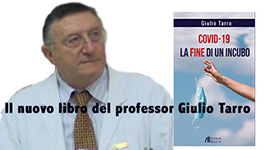



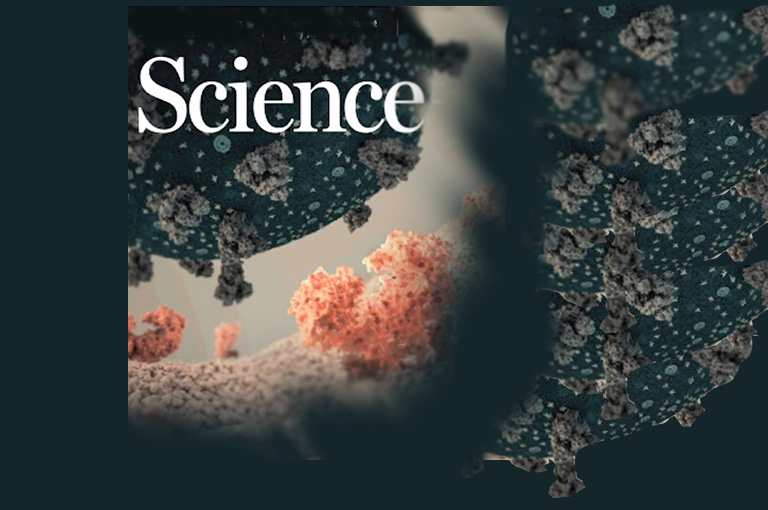
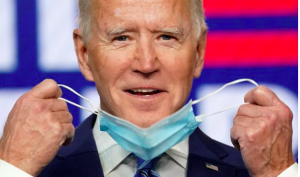




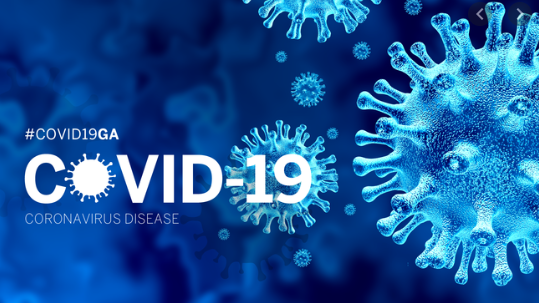





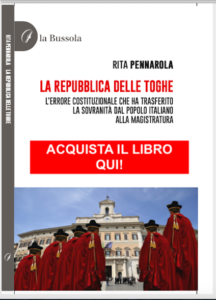




















Un commento su “COVID 19 / SI SCONFIGGE SE DIVENTA ENDEMICO, LA RIVOLUZIONARIA SCOPERTA PUBBLICATA DA “SCIENCE””